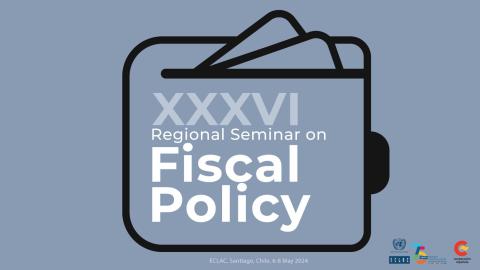Announcement
In early 2004, 215 bilateral and regional agreements were in effect worldwide and this figure is expected to rise to 300 in 2007. About 40% of world trade today takes place under the aegis of these treaties and by 2005 this should rise to over 50%. The countries of Latin America and the Caribbean are part of this trend.
Although several agreements guarantee access to developed countries' markets, in many cases they limit Latin American governments' room to manoeuvre, in terms of production development policies, and they distort trade flows within the region, ECLAC warns, in its study, Productive Development in Open Economies, presented at the Thirtieth Session.
Moreover, the simultaneous processes in multiple directions apparent in current trade policy reduce efforts to favour regional integration agreements, given countries' limited administrative and institutional capacities. The tensions these agreements impose on the political project of regional integration call for a new and renewed commitment from countries, which has begun to manifest itself.
Although negotiations to create a Free Trade Area of the Americas (FTAA) have gone ahead, the original proposal was modified to overcome the obstacles that have arisen during this process. Now the process is focusing on a small core of common clauses, while countries are to deal with other issues as they see fit.
Given the slow progress in multilateral negotiations involved in the Doha Round, the United States and the European Union took the initiative of signing bilateral free trade agreements with several of the region's countries, an initiative that has been favourably received. Agreements between the region's countries and the United States also became higher priority due to difficulties achieving the FTAA. These agreements provide certain benefits, such as access to the world's largest markets, consolidating positions and preferences that previously were the subject of discretional decisions, and bringing the possibility of growing openness to trade.
But ECLAC recommends considering the costs as well. Intra-regional trade will be affected by flows that shift to a North-South axis and countries not covered by these treaties will post net losses. Likewise, there is a risk that those covered by these agreements will lose interest in more ambitious trade at the regional level.
According to ECLAC, the advantages of a regional integration effort are numerous and would help to overcome several of the limitations present in the current scenario. The results will depend on the effort and leadership invested in negotiations dealing with the agricultural sector, which is key for several actors, especially Mercosur member countries, along with the inclusion of other issues relevant to the United States.
The Future of Subregional Agreements
Currently, subregional agreements have reached the status of imperfect customs unions, with several hurdles in the path toward a more integrated system. ECLAC considers it will be difficult for these blocs to remain in this embryonic state of integration much longer, however, given the trends in trade negotiations elsewhere in the world. If countries were to opt for multiple bilateral treaties, subregional agreements would lose their importance as an economic option, unless countries are willing to expand them to embrace issues such as the elimination of all restrictions on trade in goods, total openness of the service sector, shared phytosanitary standards and rules, harmonized bank, insurance and other financial regulations, region-wide infrastructure, and progress in macroeconomic coordination.
If progress were made in intra-regional agreements, the benefits of open regionalism would include:
-
Dismantling costly mechanisms on rules of origin applied among partners
-
Improving the region's ability to negotiate with other blocs
-
Increasing members' effectiveness in terms of activities and goods receiving discriminatory treatment at the international level
-
Reinforcing multilateral trade negotiations.
* Today within the framework of ECLAC's Thirtieth Session a seminar will be held on Retos y oportunidades del desarrollo productivo en el marco del Tratado de Libre Comercio entre Centroamerica y Estados Unidos (Challenges and opportunities for productive development in the framework of the Central American Free Trade Agreement, CAFTA). Harry Brautigam, President, Central American Bank for Economic Integration (CABEI), will act as moderator. The panellists are, Alberto Trejos, Minister of Industry and External Trade, Costa Rica; Marcio Cuevas, Minister of Economic Affairs, Guatemala; Blanca Imelda de Magaña, Deputy Minister for Trade and Industry, Ministry of Economic Affairs, El Salvador; Melvin Redondo, Lead negotiator, Central American Free Trade Agreement (CAFTA), Secretariat of Industry and Trade, Honduras; Alvaro Porta, Foreign Trade Director, Ministry of Development, Industry and Trade, Nicaragua; and Manuel Díaz Franjul, Adviser, Secretary of State for Industry and Trade, Dominican Republic.


